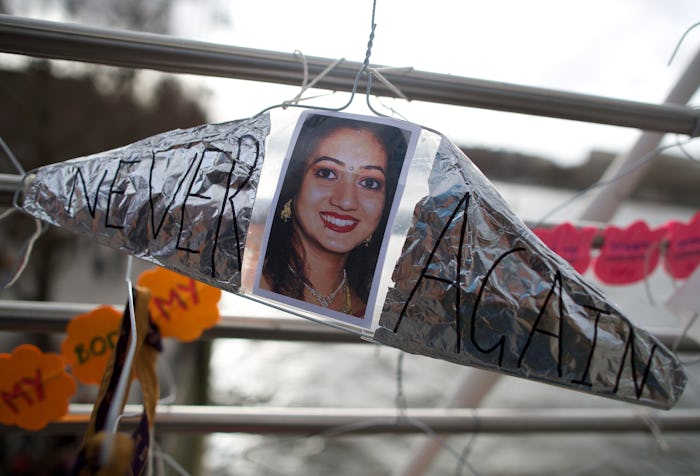News

Why Being "Pro-Life" Means You Can't Ban Abortions
Reproductive rights have been under attack in America for almost 200 years, and though 1973's Supreme Court decision on Roe v. Wade was undoubtedly a huge step forward, the attacks never stopped. As Democrats lost the House in 2010 and the Senate in 2014, the U.S. saw a sharp increase in "TRAP laws" meant to restrict abortion access. Now the White House will soon be turned over to a man who vowed to punish women who seek abortions, because he describes himself as "pro-life." But being pro-life means you can't ban abortions. That's just being anti-abortion. If a person is truly in favor of saving lives, abortion is an inalienable right, because without access to safe, legal abortion, women's lives will be lost and the abortion rate will actually rise.
The first abortion restriction in the U.S. was passed in 1821, according to CNN, and further laws were enacted throughout the 1800s. Women still sought abortions, legal or not, with disastrous consequences to their health. During the Great Depression, many women simply couldn't afford the burden of a child (or an additional child), and the need for abortion increased. Without safe, legal access to the procedure, nearly 2,700 women died from abortions in 1930, according to the Guttmacher Institute. Self-induced abortions were particularly dangerous; a study of women who underwent abortions between 1931 and 1932 found that while 91 percent of abortions performed by doctors saw no complications, only 24 percent of self-induced abortions could claim the same.
The advent of penicillin was instrumental in lowering the death rate of abortion patients; per Guttmacher, abortion led to about 300 deaths in 1950, and less than 200 by 1965. But just because women weren't dying as often doesn't mean their illegal abortions were safe. Women were inserting coat hangers and knitting needles into their cervixes, drinking turpentine and bleach, and throwing themselves down flights of stairs. As late as 1968, the University of Southern California Los Angeles County Medical Center treated 701 women for septic abortions, which worked out to one for every 14 live births.
In 2009, according to the Centers for Disease Control, just eight U.S. women died from abortion complications. Compare that to the 68,000 women who die every year after receiving unsafe abortions in countries where it's still illegal. The World Health Organization reports that 21.6 million women undergo unsafe abortions each year. Outlawing abortion doesn't stop women from seeking it; it just kills them in record numbers.
President-elect Donald Trump recently told Lesley Stahl during a 60 Minutes interview that if Roe v. Wade was overturned, women would "perhaps have to go, they’ll have to go to another state" in order to procure an abortion. While that may not seem like a big deal to someone who owns a private jet, for many women, it's simply impossible. The price tag or the procedure itself can be a burden, but once you factor in travel, lodging, child care, and missing work, the costs are insurmountable. And even those who are able to travel out of state must wait longer for an appointment as fewer clinics are available to them, and prolonging the wait can mean the difference between a medical abortion and a much more expensive surgical procedure.
The truth is that nobody is pro-abortion. Not the women who seek them, or the doctors who perform them. And there is a way to prevent them, but it's not outlawing them. It's preventing the unwanted pregnancies that lead to them in the first place. A recent large-scale public health program in Colorado that provided free intrauterine devices and implants to teens and low-income women led directly to the abortion rate falling by 42 percent, according to The New York Times. It's just that simple. If you're truly pro-life, you need to care for the lives of women, not just the fetuses they're unwillingly carrying. And if you don't want them to abort, just help ensure that they're never in a position where they need to.